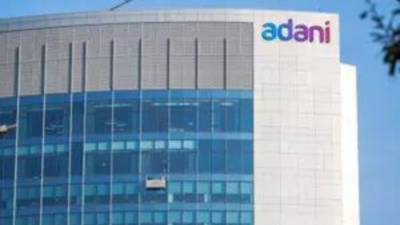Adani Group posts record EBITDA of nearly Rs 90,000 crore in FY25; boosted by infrastructure growth

NEW DELHI: The Adani Group has reported its highest-ever pre-tax profit of nearly Rs 90,000 crore for the fiscal year ending March 31, 2025, supported by robust operational performance and sound financial management. EBITDA rose to Rs 89,806 crore in FY25 from Rs 24,870 crore in FY19, reflecting a six-year compound annual growth rate (CAGR) of 24 per cent. Year-on-year, EBITDA growth stood at 8.2 per cent. Net profit for the year reached Rs 40,565 crore, marking a six-year CAGR of 48.5 per cent. Gross assets climbed to Rs 609 lakh crore, driven by the group’s continued expansion into infrastructure, airports, and renewable energy.As a result of this expansion, gross debt increased to Rs 2.9 lakh crore, though net debt was contained at Rs 2.36 lakh crore due to strong cash reserves. The liquidity buffer now represents 18.5 per cent of gross debt while the group’s cash reserves, standing at Rs 53,843 crore.Return on Assets (ROA) stood at 16.5 per cent in FY25, underlining the group’s capital efficiency. The net debt-to-EBITDA ratio improved to 2.6x, down from 3.8x in FY19, reflecting disciplined capital allocation and deleveraging efforts. Group CFO Jugeshinder ‘Robbie’ Singh attributed the strong financial performance to effective governance, ESG initiatives, and operational strength, which have also led to enhanced international credit ratings.The group’s core infrastructure businesses- including utilities, transport, and incubating assets- accounted for 82 per cent of total EBITDA. Cash flow after tax rose by 13.6 per cent to Rs 66,527 crore, further supporting the group’s asset expansion plans. Operational highlights for the year included increased solar module sales, a rise in airport passenger traffic, greater transmission line orders, and improved cargo handling volumes at its ports division.The cement business achieved a milestone capacity of 100 million tonnes.The Adani Group’s cost of debt has also declined steadily, falling from 10.3 per cent in FY19 to 7.9 per cent in FY25, aided by better credit metrics and stronger market positioning.





